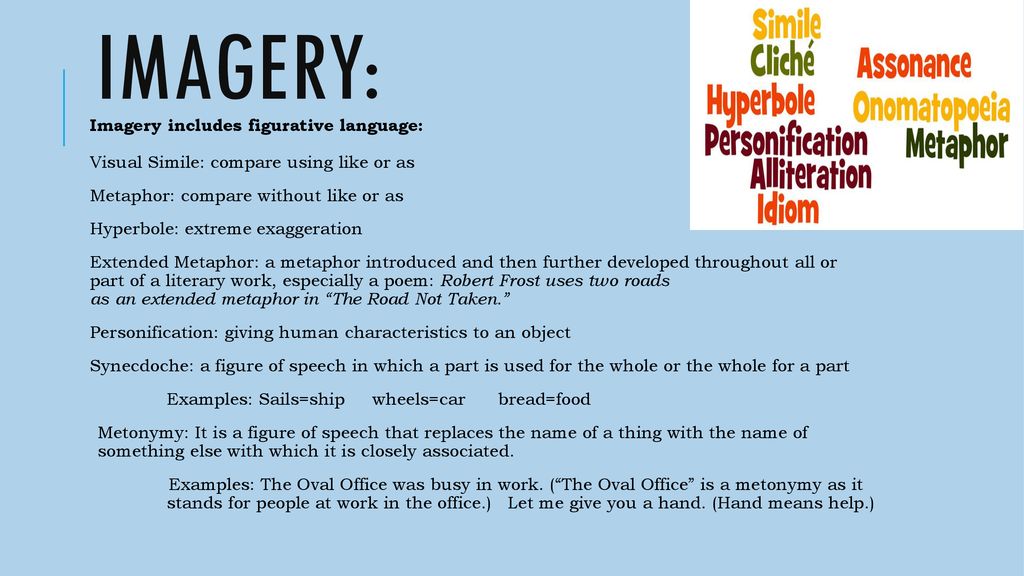
It equates those two things not because they actually are the same, but for the sake of comparison or symbolism. 7 Types of Imagery in Poetry There are seven main types of imagery in poetry. A metaphor states that one thing is another thing. What is metaphor in figure of speech?Ī metaphor is a figure of speech that describes an object or action in a way that isn't literally true, but helps explain an idea or make a comparison. '” So when contradictory or opposing words are combined, that expression is an oxymoron.

The imagery is visual imagery, auditory imagery, organic imagery, kinesthetic imagery, tactile imagery, and olfactory imagery. The figurative languages are personification, metaphors, hyperbole, simile, oxymoron, allusion, litotes, and metonymy. What is oxymoron figure of speech?Īn oxymoron is also a noun that's defined as “a figure of speech by which a locution produces an incongruous, seemingly self-contradictory effect, as in 'cruel kindness' or 'to make haste slowly. and six kinds of imagery used in Taylor Swift’s songs. That's because writers know that in order to capture a reader's attention, they need to engage with them mentally, physically, and emotionally. When a writer attempts to describe something so that it appeals to our sense of smell, sight, taste, touch, or hearing he/she has used imagery.An easy way to spot imagery in a text is to pay attention to words, phrases, and sentences that connect with your five senses (sight, smell, taste, touch, and sound). Imagery is the literary term used for language and description that appeals to our five senses. King’s imagery focuses on two categories in his imagery: landscape and time. Keeping this in view, what is an imagery in literature? The interpretation of parts of speech in modern.

Keeping this in view, what is organic imagery? A black cat, a dark alley and a stormy night are. Images are strong sensory techniques that can be used as a basis for much further development in any piece of literature. Phrases that make the reader feel sad, fearful, nostalgic, elated, even lost are all extremely effective organic imagery. However many types of stylistics may exist or spring into existence they will all consider the same source material. This famous chant lies in the opening scene of William Shakespeare’s tragedy Macbeth, providing dark evil imagery to evoke the senses and set a tone for the play. Organic imagery is the most difficult form of imagery to write, because it deals with creating a specific feeling or emotion within the reader.


 0 kommentar(er)
0 kommentar(er)
